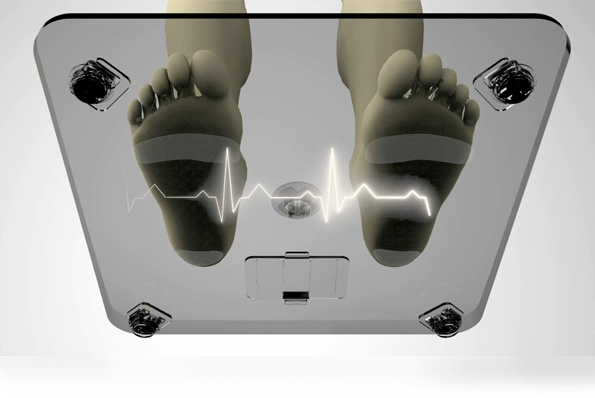Heart Rate and Fitness

Heart rate is an important indicator that can help you understand your fitness level, as well as how it changes over time!
How to measure your heart rate
To measure your heart rate without a wearable device, use your fingers to find your pulse in the neck or wrist. Count the number of beats you detect in one minute. (Alternatively, you can count for 15 seconds, and multiply that number by four.)
So for example, if you count 78 beats in a minute, then your heart rate is “78 bpm” (beats per minute).
This is referred to as “resting heart rate”, when your body is not exerting itself. A healthy resting heart rate is typically between 60-100 bpm, though there can be a lot of individual variation, as well as variation throughout the day. Generally speaking, athletes and people with high fitness levels have lower resting heart rates.
(To measure resting heart rate more conveniently, you can also consider using a Cardio Scale such as the Oserio FTG-588 Body Composition & Cardio Scale, which will automatically measure Heart Rate together with Body Composition and send results to the O’Care app for automated data recording and tracking.)
Heart rate zone training
Skeletal muscle can be built through resistance training. Can you also train your cardiac fitness? Of course! This is typically done by structuring exercise plans around the 5 heart rate zones, based on your goals. Training focused on improving efficiency may look a bit different compared to training focused on better endurance.
Technically, each zone is defined based on a percentage of maximum heart rate. For example, Zone 1 is typically defined as 50-60% of maximum heart rate, while Zone 5 is 90-100% of maximum heart rate.
In terms of “how it feels”, you can think about Heart Rate Zones in the following ways:
Zone 1:
Easy and comfortable, similar level of exertion to a warm-up or cooldown. Ideally, you’d be able to sing a song with no trouble at all while in this zone.
Zone 2:
This is a bit more challenging compared to Zone 1. You can still hold a conversation, but might need to take a deep breath now and then. This is the zone you want to stay in to build endurance and aerobic capacity, and most commonly used for endurance sports like running and bicycling.
Zone 3:
It’s harder to stay in Zone 3 compared to Zone 2, and it’s harder to keep talking. This is typically a pace runners will try to maintain steadily while training.
Zone 4:
Zone 4 can be sustained for about an hour at the most, and not one you can maintain for a marathon or half-marathon.
Zone 5:
This is all-out, essentially at a sprint, where it’s impossible to talk.
Typically speaking, most endurance training tends to be in Zone 1-3, while Zone 4-5 will be used to a lesser extent, depending on fitness goals.
A word of caution
As we’ve explained above, heart rate data can provide useful indicators for health, but we’d also caution against relying too much on this data! At the end of the day, how you feel is still very important. Regardless of what the numbers say, can you hold a conversation while running or working out? That by itself could be a very useful sign of your cardiac fitness.
Measuring data is valuable, but it is important not to be consumed by data and miss the forest for the trees. If the data is helping you make more informed decisions about your lifestyle and fitness routine, that’s great! But if it’s distracting you from focusing on the workout itself, or worrying too much when your body feels fine, then perhaps it’s better to take a step back and keep the big picture in mind.